







Managing Editor
Sarath Shyam
Consultant Editors
Dr. John Andrews
Emma James
Andrew Scott
Most Promising B-Schools to Look for in 2023
Naomi Wilson
Stanly Lui
Joseph Alex
Creative Consultants
Charlie Jameson
Edwards Gonzalez
Branding & Marketing Partnerships
Jennifer Anderson
Alice Smith Monica Davis
Anna Elza
Enquiry
admin@highereducationdigest.com
Free Subscription
International Representation
Americas 16192 Coastal Highway, Lewes, DE 19958, USA
Europe
27, Old Gloucester Street, London, WC1N 3AX, UK
Middle East & Africa P.O. Box 48299, Dubai Silicon Oasis, Dubai, UAE
Asia-Pacific
Ramanashree Arcade, 18 MG Road, Bangalore – 560001, India
Higher Education Digest is a digital magazine published by Connecta Innovation Private Limited. All rights reserved. The opinions expressed in the content and pictures provided are those of the authors. They do not purport to reflect the opinions or views of the Connecta Innovation Private Limited or any of its members and we do not assume any responsibility. The publisher does not assume any responsibility for the advertisements, its content, pictures, and all representation of warranties made in such advertisements are those of the advertisers and not of the publisher.
Higher Education Digest is a Free Subscription digital magazine strictly not for sale and has to be strictly for internal private use only. Publisher does not assume any responsibility arising out of anyone printing copy of this digital magazine in any format and in any country and all matters related to that.


4 Higher Education Digest June 2023
June 2023 Vol - 5 Issue - 7
Navigating Modern Business Trends: Unveiling the Leading Business Schools Shaping Future-ready Leaders
In today’s rapidly evolving world, businesses face an array of complex challenges, ranging from digital transformation and sustainability to globalization and disruptive technologies. It is essential for aspiring business professionals to acquire the knowledge and skills necessary to tackle these pressing issues and drive meaningful change.
In this issue, we present the 10 Most Promising B-Schools to Look for in 2023, renowned for their commitment to preparing students to navigate and solve modern business challenges. These institutions have recognized the need for innovative approaches and have integrated forward-thinking curricula, cutting-edge research, and experiential learning opportunities to equip their students with the tools to thrive in the dynamic business landscape.
Each of these schools has established itself as a leader in addressing specific areas of business trends. Whether it’s leveraging technology for digital innovation, implementing sustainable business practices, fostering entrepreneurship and innovation, or embracing diversity and inclusion, these institutions are shaping the next generation of
business leaders who are ready to make a positive impact on society.
By attending one of these top business schools, you’ll gain a comprehensive understanding of the latest industry trends and acquire the practical skills needed to address them effectively. The faculty members at these institutions are renowned experts in their fields, actively involved in research and consulting projects that tackle realworld business challenges. Moreover, the schools often foster collaborations with industry partners, providing students with valuable networking opportunities and access to cutting-edge insights.
On the cover, we feature Hood College, located in a fantastic college town in Frederick, Maryland. The vibrant academic community at Hood College comprises 109 international graduate students and 14 undergraduate international students from 28 diverse countries worldwide. We invite you to explore our list of the best business schools that prioritize preparing students to address modern business trends. Discover their specialized programs, unique research centers, and notable partnerships that facilitate real-world problem-solving.
Enjoy Reading.
Sarath Shyam

5 Higher Education Digest June 2023
MANAGING EDITOR’S NOTE
HOOD COLLEGE
Empowering Students to Lead Purposeful Lives

6 Higher Education Digest June 2023 CONTENTS
COVER STORY 10


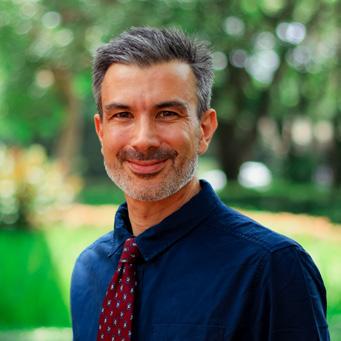
7 Higher Education Digest June 2023 CIMBA Leading the Way in Global Business and Leadership Education 34 OHM PROFESSIONAL SCHOOL Creating Life-Long Learners and Global Professionals 58 UNIVERSITIES MUST REQUIRE CLIMATE LITERACY FOR ADMISSIONS Benjamin Freud, Co-Founder, Coconut Thinking 48 MENTOR’S MANTRA
INDUSTRY PERSPECTIVE
INCREASING ACCESS AND AFFORDABILITY THROUGH EDUCATION DELIVERY OPTIMIZATION

FACTORS THAT INFLUENCE STUDENTS’ DECISION TO STUDY ABROAD
Iram Lone, International Careers and University Guidance Lead Consultant, Lone Consultancy
70

8 Higher Education Digest June 2023 CONTENTS 52
Nick Suwyn, Founder & CEO, Promineo Tech
ACADEMIC VIEW
FROM EDUCATION DATA TO AI: EXPLORING INNOVATIONS IN EDUCATION RESEARCH
Dr. Mark Schneider, Director, Institute of Education Sciences, Department of Education, USA

UNLOCKING STUDENT ACHIEVEMENT: LEADERSHIP BEST PRACTICES AND STRATEGIES
Claudiane Moraes, School Principal, Key Point Christian Academy
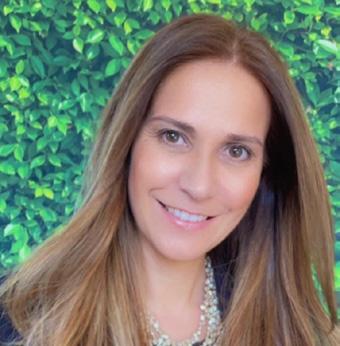
POSTGRADUATE TAUGHT STUDENTS – THE GROWING CHALLENGE FOR CAREERS ADVISORS AND EMPLOYABILITY SERVICES IN UK HIGHER EDUCATION
Tom Lowe, Senior Lecturer, University of Portsmouth (UK)

9 Higher Education Digest June 2023
22
76
66

Education
Empowering Students to Lead Purposeful Lives

COVER STORY COVER
STORY
Education June 2023
Located in a fantastic college town in Frederick, Maryland, Hood College has a strong international community. With students from 28 countries, international students make up 12 percent of its graduate population. “Word of mouth has been the main engine of attracting
and recruiting our international students. We often hear from international students that they received individualized attention when they contacted us. When they arrive on campus, students are met with exceptional support and the warmth of our ‘Hood Hello,’” says Amani Al-Dajane, Hood College’s Director of
ABOUT
Amani Al-Dajane is Hood College’s Director of International Student Services and Principal Designated School Official (PDSO). She has more than 15 years of experience in higher education with a strong commitment to helping students achieve their academic and career goals. Al-Dajane is originally from Palestine. However, she was born and raised in Kuwait and then immigrated to Canada, where she earned her Honours Bachelor of Arts in sociology and economics from the University of Toronto. She obtained her MBA from Hood College and was inducted into the International Business Honor Society, Delta Mu Delta. She is bilingual in English and Arabic and enjoys traveling abroad.

12 Higher Education Digest June 2023
Amani Al-Dajane
Director of International Student Services and Principal Designated School Official (PDSO)
Hood College offers 30 bachelor’s degrees, 25 concentrations, 43 minors, and preprofessional preparation in medicine, veterinary science, dentistry and law.
International Student Services and Principal Designated School Official (PDSO).
Upon arrival at Hood College, all international students are mandated to attend an orientation program. The program serves a dual purpose of acquainting students with the institution’s policies and facilitating their transition to life in the United States. During the orientation, students receive comprehensive information on various topics, including but not limited to the College’s history, transportation options, health
insurance, procedures for obtaining a driver’s license, opening a bank account, and getting a social security number. Additionally, they receive an introduction to the key offices that play a central role in ensuring their academic success, including the Library and Learning Commons, Career Center, Student Success Center, Wellness Center, Information Technology, Registrar, and International Student Services.
The peer mentor program is a crucial component of the orientation program, where

13 Higher Education Digest June 2023
The Virginia Munson Hammell ’67 Trading Room
new international students are matched with experienced upperclassmen. This program provides invaluable support to new students, as it offers a platform for them to seek answers to their questions and gain insight into the experiences of their peers. Connecting with fellow students who have undergone similar experiences helps alleviate the sense of disorientation and “culture shock” that often accompanies the transition to the U.S.
“At Hood College, our diverse range of cultural events and programs are key to attracting international students to join our institution.
Our calendar is packed with events such as International Education Week, Diwali, Holi, Iftar for Ramadan, and many more holidays and festivities,” shares Al-Dajane. Hood College offers a range of popular academic programs, such as computer science, information technology, and business, which draw in students from across the globe. The College has recently introduced on-campus graduate housing facilities to enhance the campus experience for its international students. “We also have the Global Citizen Club for international students. They host events such

14 Higher Education Digest June 2023
Hood’s annual Parade of Flags.
as international bingo night, international dinner, global parties, and more,” adds Al-Dajane.
The vibrant academic community at Hood College comprises 109 international graduate students and 14 undergraduate international students from 28 diverse countries worldwide. These students hail from countries such as Bangladesh, Brazil, China, Colombia, Congo, Cook Islands, England, France, Germany, Ghana, Haiti, India, Iraq, Jordan, Madagascar, Malawi, Nigeria, Pakistan, Palestine, Saudi Arabia, Sierra Leon, Spain, Tanzania, Thailand, Turkey,
Hood College currently has over 123 international students from more than 28 countries who contribute to a rich cultural diversity and dynamic fusion of perspectives on campus.
Zimbabwe, Qatar, and United Arab Emirates. The rich tapestry of cultures, perspectives, and experiences in its student body fosters a dynamic and inclusive academic environment that nurtures cross-cultural understanding, global awareness, and personal growth.

A Century-Old Establishment
Hood College was established in 1893 as a women’s college, with male students admitted for the first time in 1971. The College became fully coeducational in 2003. The institution’s
15 Higher Education Digest June 2023
mission is to offer students an education that combines the liberal arts and the professions, empowering them to meet personal, professional, and global challenges. This education equips students with the tools to lead purposeful lives of responsibility, leadership, service, and civic engagement. The College’s vision is to be the top choice for students seeking a comprehensive liberal arts and sciences education that prepares them holistically for personal and professional achievement. Additionally, the College strives to provide an inclusive environment that fosters the
values of responsibility, leadership, service, and civic engagement.
Hood College offers an extensive selection of academic programs that cater to the demands of today’s competitive economy. With 30 bachelor’s degrees, four pre-professional programs, 20 master’s degrees, two doctorates, and 13 postbaccalaureate certificates, the College provides students with a range of opportunities to excel in their chosen fields. The College offers flexible scheduling options, with evening and weekend classes and online/hybrid options, enabling
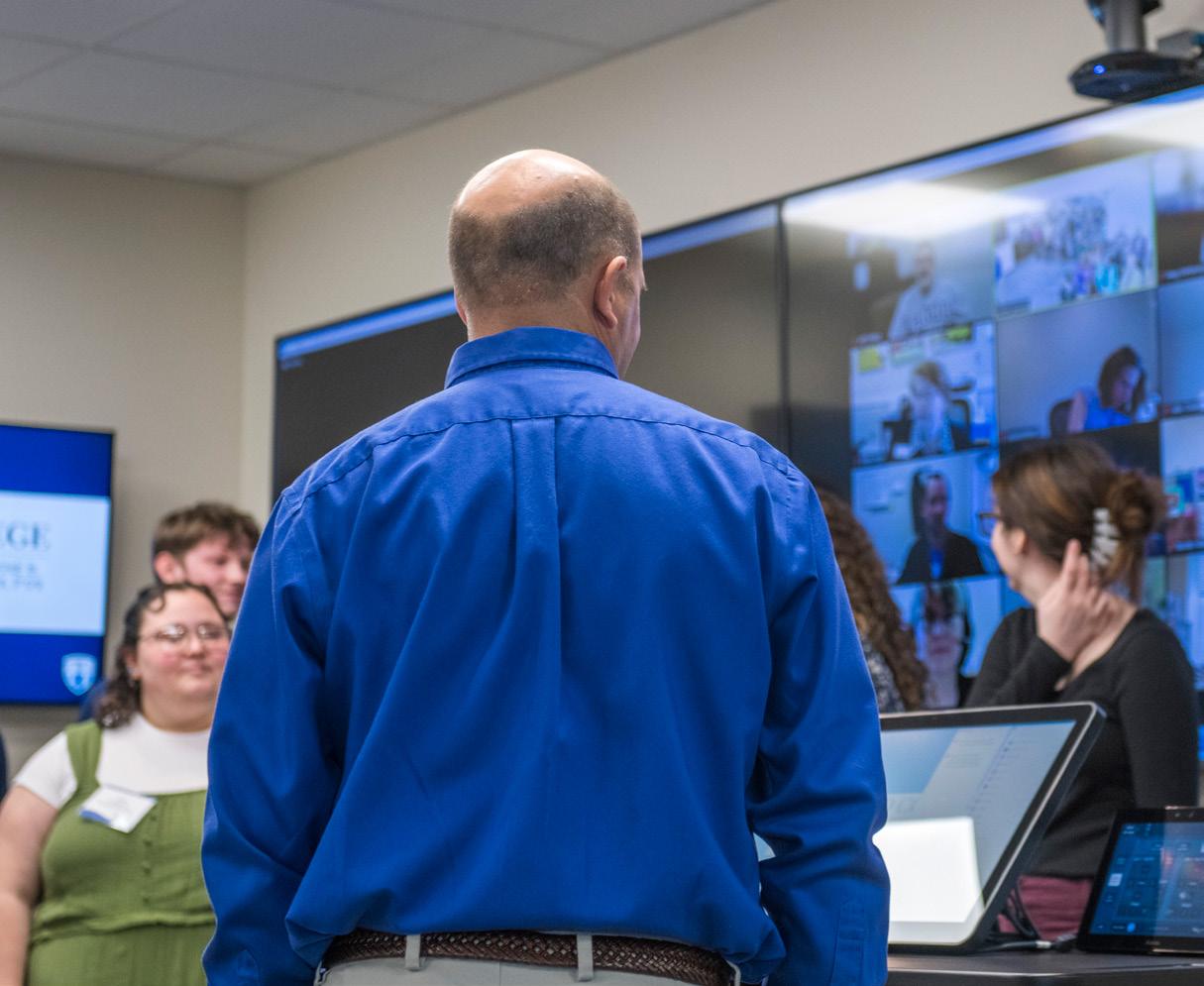
16 Higher Education Digest June 2023
The Michael S., P’09 and Marlene B. Grossnickle Young ’76, H’14, P’09 Data Driven Frederick Center
Hood College is renowned for its highly soughtafter programs, with computer science, information technology, management information systems, cybersecurity, and business being the top five most popular programs among international students.

students to balance their academic pursuits with other commitments. Moreover, the College provides international students with the same competitive tuition rates as domestic students, personalized attention, and robust support services.
“We have achieved a 100 percent approval rating for Optional Practical Training (OPT) for international students. Furthermore, international students can also apply for STEM OPT, which allows them to work an additional two years after completing their OPT,” shares Al-Dajane. The College’s simulation trading room and data center provide a unique opportunity for business students to gain practical experience, while its expert practitioner-based faculty members are dedicated to providing high-quality education. In addition, Hood College prides itself on being a diverse and vibrant community, encompassing many faiths, beliefs, traditions, and cultures, making it an ideal destination for students seeking a dynamic and inclusive academic experience.
At Hood College, international students can immerse themselves in a multitude of facilities, including the Beneficial-Hodson Library and Learning Commons, the Hodson Science and
17 Higher Education Digest June 2023
Technology Center, the Ruth Whitaker Holmes School of Behavioral and Health Sciences, the NeighborHood Counseling Training Center, the Virginia Munson Hammell Trading Room, the Data Driven Frederick Center, Broadcast Studio, Delaplaine Media Center, Ronald J. Volpe Athletic Center and many more.


Learners’ Paradise Hood College is renowned for its highly soughtafter programs, with computer science, information technology, management information systems, cybersecurity, and business being the top five most popular programs among international students. However, Hood also offers a diverse range of other programs catering to international students’ interests and passions. These programs include biomedical science, bioinformatics, environmental biology, ceramics, mathematics, and education.
In addition, Hood College offers two doctoral degrees, namely organizational leadership (DOL)
18 Higher Education Digest June 2023
Hood celebrates Holi, also known as the Festival of Colors.
and business administration (DBA), which are highly coveted by international students seeking to pursue advanced research and scholarship. The institute’s distinguished faculty members, who are experts in their respective fields, provide unparalleled mentorship and support to our doctoral students throughout their academic journey.
Hood College boasts a highly qualified faculty, with 97 percent of full-time faculty members holding a doctorate or terminal degree in their respective fields. Many faculty members are practitionerbased, bringing their real-world experience into the classroom and maintaining industry connections. This diverse faculty comes from a variety of
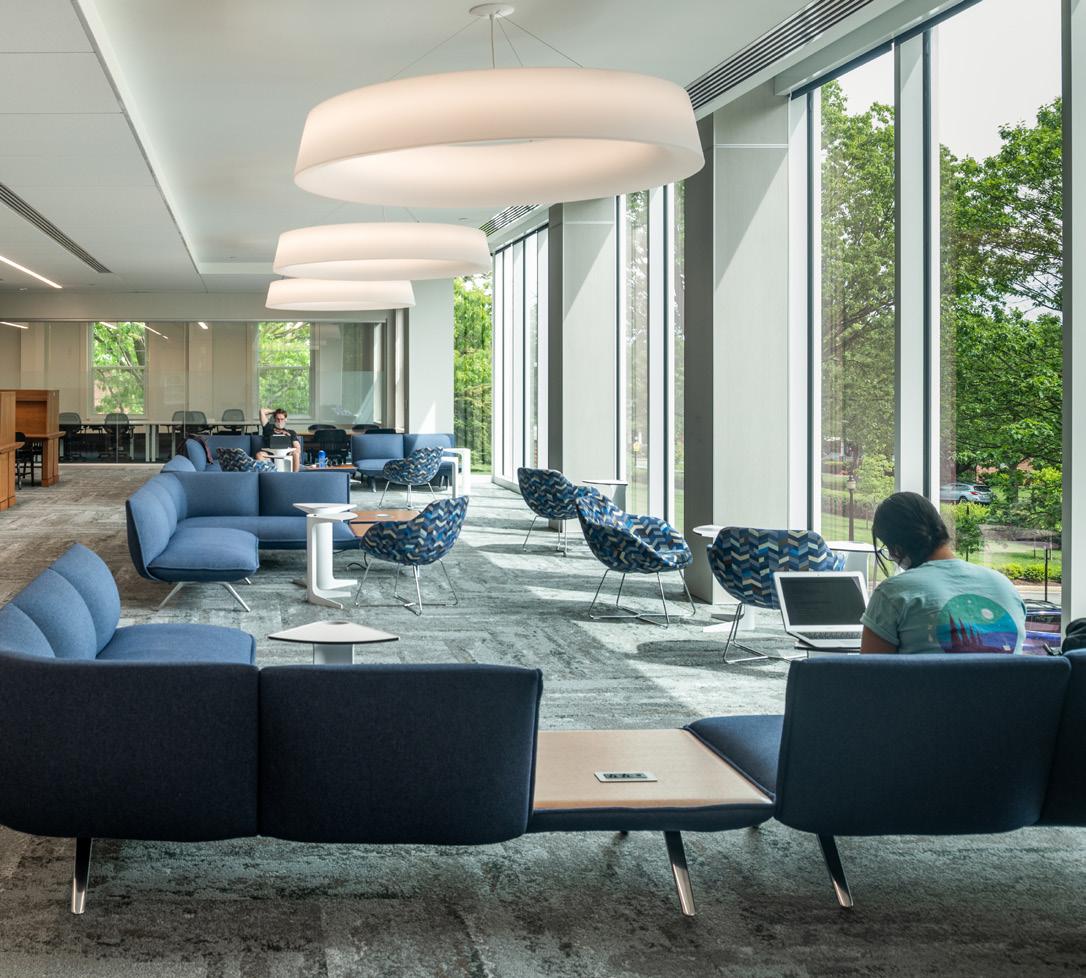
19 Higher Education Digest June 2023
The Beneficial-Hodson Library and Learning Commons
backgrounds, creating a prosperous and inclusive learning environment for students. With an impressive 11:1 student-to-faculty ratio, students benefit from personalized attention and guidance from their professors. In fact, a recent survey found that 94 percent of students reported being satisfied or very satisfied with the quality of Hood’s faculty. “All Hood College faculty create an inclusive teaching and learning environment and are encouraged to design courses to reflect global diversity and set expectations in their classroom to respect others’ viewpoints,” pinpoints Al-Dajane.
As a liberal arts institution, students at Hood College benefit from a versatile and wellrounded education that enables them to develop interdisciplinary competency beyond their declared major. Al-Dajane assures, “We are committed to promoting high-impact practices, such as experiential learning, internships, fieldwork, study abroad programs, and collaborative research with faculty.” In addition, students have access to a range of support services, including the Career Center, Writing Center, Student Success Center and Office of Student Engagement, designed to help them succeed academically and professionally.
Hood College offers its students unique opportunities to gain practical experience and prepare for their future careers through Data Driven Frederick Center and the Career Center. The Data Driven Frederick Center allows students to collaborate with local businesses, organizations, and government entities to collect and analyze data, providing valuable hands-on experience in their field of study. Similarly, the Career Center connects students with workstudy and internship opportunities, giving them a chance to apply their classroom knowledge to real-world situations and make meaningful
professional connections. These resources are just a few examples of how Hood College goes above and beyond to support its students’ success inside and outside the classroom.
A Campus Life to Remember
Hood College offers a small, welcoming campus community where students are greeted with a warm “Hello!” “Our campus is host to a variety of exciting events throughout the year, including Midnight Breakfast, Crab Feast, Hoodstock, and more. Our students are highly engaged in campus life, participating in student-run clubs and organizations, honor societies, and more than 20 athletics programs,” shares AlDajane. Hood College also provides a wealth of resources for career development, including recruitment events and internships through the Career Center. Additionally, the campus is within walking distance of historic Downtown Frederick, offering students access to world-class restaurants, galleries, shopping, parks, and other attractions.
Hood College recently launched its 20222025 strategic plan, “For a Greater Hood.” The plan focuses on enhancing the student experience by prioritizing diversity, equity, and inclusion initiatives. It also aims to establish the School of Behavioral and Health Sciences and the Biomedical Research and Training Center. Additionally, the plan seeks to expand Hood’s presence in the greater Baltimore and Washington, D.C. area and strengthen its branding and marketing efforts to enhance its reputation and attract students from around the world. These initiatives reflect Hood’s commitment to academic excellence and innovation, as well as its dedication to providing a comprehensive, well-rounded education that prepares students to thrive in today’s global society.
20 Higher Education Digest June 2023

From Education Data to AI: Exploring Innovations in Education Research
Dr. Mark Schneider, Director, Institute of Education Sciences, Department of Education, USA
With an impressive background in education policy and research, Dr. Schneider brings a wealth of knowledge and expertise to his role. Prior to joining IES, he held prominent positions such as Vice President and Institute Fellow at the American Institutes for Research (AIR), President of College Measures, and Commissioner of the National Center for Education Statistics. Dr. Schneider’s contributions to higher education policy have been widely recognized, earning him a spot among the Chronicle of Higher Education’s top 10 influential individuals in 2013. As an accomplished author, he has published several books and articles, including “The University Next Door” and “Getting to Graduation.” With his extensive experience and profound insights, Dr. Schneider offers valuable perspectives on the current landscape of education research and the future of evidence-based practices.
Can you tell us about some of the most significant global education trends you have observed in recent years?
Of course. In the last few months, there has been worldwide discussion about AI and the potential impact of AI, particularly generative AI such as ChatGPT, on various aspects of society. I recently
returned from a week at OECD in Paris, where AI dominated almost every discussion.
Another significant trend is the rise of remote online instruction and its comparison to in-person learning. This has sparked a broader conversation about teaching and learning, topics that have long been fundamental in K-12 education but
22 Higher Education Digest June 2023 ACADEMIC VIEW
While the United States has been at the forefront of advocating for research and policy based on strong evidence, many countries are also recognizing the importance of creating a robust evidence base

23 Higher Education Digest June 2023
have gained more attention in higher education, especially after the pandemic.
A shift away from diplomas and formal credentials towards a focus on skills is also a notable trend. Many discussions in the U.S. and other countries, particularly those within the OECD, revolve around the concepts of “upskilling” and “reskilling” rather than solely focusing on degrees. It is crucial to measure the return on investment for both formal credentials and other training programs, and there is a growing recognition of the need to identify such ROI.
Intense discussions about the appropriate duration required to master skills or obtain
degrees are also apparent. The concept of rightsizing the time needed for skill acquisition or degree completion is being actively debated.
The Institute of Education Sciences is responsible for conducting and funding education research in the United States. How do you see your work fitting into the broader landscape of global education research?
While the United States has been at the forefront of advocating for research and policy based on strong evidence, many countries are also recognizing the importance of creating a robust evidence base. There is a widespread belief in the
24 Higher Education Digest June 2023
The convergence of AI and big data presents transformative opportunities in education research and practice. It has the potential to revolutionize individualized learning, enhance efficiency, and inform decision-making processes
need to modernize data collections and accelerate the research process.
In the past, there was a prevailing belief that education research followed a “build it and they will come” approach, akin to the famous “field of dreams” concept. However, there is now a growing recognition that this strategy is not effective for education researchers in general, much like it worked for Kevin Costner in the movie. Consequently, there is an increasing concern regarding how to translate complex research into more accessible and readerfriendly reports.
Another ongoing concern is the challenge of obtaining survey responses and the rising cost associated with conducting surveys. To address this, IES has been actively identifying “administrative” data systems that can provide answers to topics that were traditionally covered by surveys. Shifting towards these administrative data systems ideally allows for more regular and faster data updates compared to the lengthy lead time required for survey data. While there will always be some questions that necessitate surveys, the reliance on surveys is diminishing.
Parallel to the shift towards administrative data, there is a growing recognition of the significance of merging diverse data systems. Instead of having separate silos for education data, labor market data, social welfare data, and so on, linking these systems together is crucial for obtaining detailed and accurate assessments of social conditions. Naturally, as data systems are integrated, privacy concerns become more pronounced. However, efforts are being made to develop increasingly sophisticated methods to safeguard privacy while leveraging linked data systems for research purposes.
You have authored several books related to education, including The University Next Door, Getting to Graduation, Higher Education Accountability, Charter Schools: Hope or Hype? and Choosing Schools. Can you discuss some of the key insights or arguments you present in these works?
The last two books on the list focused on K-12 education and examined how parents gather and utilize information in the face of increased school choices for their children compared to the traditional model of neighborhood schools. Although the rate of growth in charter schools has slowed since I worked on those books, other forms of choice, such as education savings accounts and homeschooling, continue to expand. The future of K-12 school choice is closely tied to the importance of information in how parents gather and utilize it.
In contrast, higher education has always provided more options for students and their families compared to traditional K-12 schooling. The aforementioned higher education books also emphasize the significance of information flow and the decision-making processes of students. Additionally, they highlight the vital role that non-selective colleges and universities play in education. While prestigious institutions like Harvard, Yale, Stanford, and similar elite schools receive considerable attention, the percentage of college students enrolled in these institutions is far smaller compared to those attending less- or non-selective regional campuses. These “universities next door” serve as the backbone of the American higher education system. Factors such as the skills students acquire, the pace and completion of their studies, and their
25 Higher Education Digest June 2023
post-graduation outcomes in the labor market significantly impact both student well-being and society as a whole.
Thankfully, efforts to measure post-graduation outcomes have improved, largely through the linkage of employment data with information about the school and the program of study in which students were enrolled. This allows for a better understanding of what happens to students after they leave higher education.
In your view, what are some of the biggest challenges facing higher education today, both in the United States and globally? How can these challenges be addressed?
The U.S. higher education system, known for its rigidity, high costs, and outdated practices, poses a significant problem. This issue is increasingly recognized not only in the U.S. but also in other countries. The value and worth of a higher education degree, considering the effort and expense involved, have come into question. Both public and private employers are beginning to doubt the extent to which a degree is necessary. As the focus shifts towards emphasizing skills rather than degrees, higher education institutions will face challenges to their traditional approaches.
Furthermore, there is a looming demographic crisis across OECD countries, where the number of children progressing through the education system is declining. While countries like Korea and Japan have been grappling with this issue for some time, the U.S. and European nations are also experiencing a shortage of “traditionalaged” students to fill university seats. Attempts to address this gap have been made by attracting international students. However, immigration
policies and perceived hostility towards foreign students have made it more challenging for the U.S. to fill enrollment gaps with international students. Given that it is not possible to instantly increase the number of 18-24-year-olds, many colleges and universities are considering how to enroll older students. Accommodating the needs of this older population requires a different mindset regarding scheduling and available topics of study. Additionally, institutions may face the challenge of maintaining expensive physical facilities that may be too large for the potential student body size.
The COVID-19 pandemic has had a major impact on education systems around the world. How do you see this crisis affecting the future of higher education, and what can educators and policymakers do to mitigate the negative consequences?
The long-term implications of the COVID-19 pandemic on higher education are still unknown. While there is substantial evidence showing that students have experienced significant cognitive setbacks, particularly in K-12 education, the exact duration of these deficits remains uncertain. Some estimates suggest that students may have lost up to two years of learning during the pandemic. However, emerging evidence indicates that student cognitive skills are showing signs of recovery.
In contrast, the social and behavioral losses that students have encountered during the pandemic have received less attention. Nonetheless, there is evidence suggesting that these losses were substantial and may have equally significant negative consequences as the well-documented cognitive declines. Although most of the evidence
26 Higher Education Digest June 2023
pertains to K-12 students, it is important to consider that these students will eventually transition through the elementary and secondary education system and many will pursue post-
universities in the years to come. However, we can hope that students will exhibit high levels of resilience in overcoming the challenges they have faced during the pandemic.
The field of education research is constantly evolving. What are some of the most exciting new developments or approaches you have seen emerge in the past few years, and how do you see these shaping the future of education research and practice?
Harnessing AI for the betterment of education is an incredibly important and exhilarating challenge that I have witnessed in recent years, and it may be one of the most significant challenges ever faced. AI presents an unparalleled opportunity to develop personalized approaches to teaching and learning, enabling every student to reach their full potential. Additionally, AI has the potential to alleviate teachers from the burden of administrative tasks, which often consume their time and energy, allowing them to focus on their core responsibilities of teaching.
secondary education. The resilience of students in overcoming both cognitive and social-emotional losses remains uncertain at this stage. A slow recovery in these areas could impact colleges and
The field of “big data” also holds great promise for education research. As previously mentioned, there is a shift occurring from relying on survey data to utilizing administrative data in order to address key research questions. The realms of big data and AI are closely intertwined. AI systems, particularly the latest large language models that underpin generative AI, require extensive amounts of high-quality data. Some of this data can be sourced from national assessment systems, such as the National Assessment of Educational Progress in the US, while other data may come from states or private companies. Regardless of the data source, it is crucial that we exert considerable
27 Higher Education Digest June 2023
IES has been working on how best to make available large data sets (such as NAEP mentioned above) available for generative AI models, so that they report more accurate information than they would without ingesting large highquality data sets
effort to safeguard learner privacy. However, it is encouraging to observe the development of new privacy protection protocols that can assist us in fulfilling our duty to ensure privacy.
The convergence of AI and big data presents transformative opportunities in education research and practice. It has the potential to revolutionize individualized learning, enhance efficiency, and inform decision-making processes. Nevertheless, it is of utmost importance to navigate these advancements responsibly, adhering to ethical data usage and prioritizing the privacy and wellbeing of learners. By integrating these emerging technologies and methodologies thoughtfully, we can shape a future of education that is more inclusive, effective, and tailored to the needs of every student.
The Institute of Education Sciences is located in the United States, but education is a global issue. How do you collaborate with international researchers and organizations, and what do you see as the benefits of such collaboration?
IES is a full participant in every OECD education/ skills initiative. I am a member of OECD’s CERI governing board and attend OECD’s Education Policy Committee meetings. Peggy Carr, commissioner of NCES, chairs the PISA governing board. We participate in PIAAC and TALIS. IES staff are central to discussions of OECD data collections and work with OECD to make sure the Education as a Glance is reliable and presents valid data. IES also participates in TIMSS and PIRLS, run by the IEA. We also work closely with the EEF in the UK, sharing information about how to structure toolkits to help education stakeholders identify what works and for whom. Our What Works Clearinghouse
28 Higher Education Digest June 2023
Research skills are foundational, but researchers need to know how to increase the visibility of their work (beyond simply publishing it in journals) if they wish to improve conditions on the ground and to feel rewarded and recognized for their contributions
was one of the first and most comprehensive education clearinghouses in the world and has served as a model for others.
How do you keep yourself updated with the latest trends in education?
Lots of reading! I have not yet mastered YouTube for scholarly work. I find it amazingly useful for getting information about repairs (most recently for how to descale my espresso machine) but haven’t cracked the code for using it more broadly. IES has been moving more and more of our work onto YouTube videos, so I guess I will have to get with the program.
I am also playing around with ChatGPT to see how well it can generate high quality information about education trends. More importantly, IES has been working on how best to make available large data sets (such as NAEP mentioned above) available for generative AI models, so that they report more accurate information than they would without ingesting large high quality data sets.
What projects or goals are you working on or leading currently?
Perhaps the most exciting is the support IES has received from Congress and the Administration to move toward DARPA-like functions in the Institute. DARPA, the Defense Advance Research Project Agency, emphasizes highrisk/high-reward product development aimed at breakthroughs in technology and capabilities. DARPA-like units have been set up in several government agencies, most notably the Department of Energy (ARPA-E) and the Department of Health and Human Services (ARPA-H). Smaller ARPAlike investments have been made in other branches of the U.S. government and we are hoping to have IES join that list.
Another high impact project focuses on updating the State Longitudinal Data Systems that we have funded and supervised for close to 20 years. These systems were first built to house data about K-12 education but over the years have supported links “downward” to early childhood education and “upward” to postsecondary education and, in many states, employment outcomes. As noted above, the next version of these systems will act as a “backbone” which other data, for example, from social welfare agencies or from the criminal justice system, to help provide a fuller picture of student lives.
Finally, for those who are interested in pursuing a career in education research, what advice would you offer? What skills or attributes do you think are most important for success in this field?
Clearly, education research has become more technical over time, requiring a set of modern analytic skills. But education research has also become more demanding, involving many more disciplines and larger teams than earlier work. So, team management skills matter. Researchers must also master communications skills. This will often require dropping all the jargon and tendentious writing that is all too often rewarded in graduate training. Learning how to write concisely and powerfully is essential. IES’ style guide can be summarized as: “Short sentences. Strong verbs.”
Research skills are foundational, but researchers need to know how to increase the visibility of their work (beyond simply publishing it in journals) if they wish to improve conditions on the ground and to feel rewarded and recognized for their contributions.
29 Higher Education Digest June 2023
CIMBA
Website:
https://cimbaitaly.com/
Country: Italy
Key person: Dr. Al H. Ringleb, Founder and President
Admission:
https://cimbaitaly.com/mba-admission-aid/

ESADE Business School
Website:
https://www.esade.edu/en
Country: Spain
Key person: Dr. Joan Rodon, Dean
Admission:
https://www.esade.edu/mba/en/programmes/ full-time-mba/admissions/admission-process

30 Higher Education Digest June 2023
HEC Paris Hood College

Website:
https://www.hec.edu/en
Country: France
Key person: Eloïc Peyrache, Dean
Admission:
https://www.hec.edu/en/mba-programs/ mba/admissions
Website:
https://www.hood.edu/
Country: USA
Key person: Amani Al-Dajane, Director of International Student Services and Principal Designated School Official (PDSO)
Admission:
https://www.hood.edu/admission-aid

Lagos Business School, Pan-Atlantic University Melbourne Business School
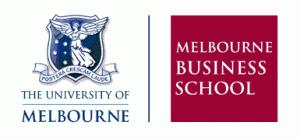

Location: Lagos, Nigeria
Website:
https://www.lbs.edu.ng/
Key person: Professor Chris Ogbechie, Dean
How to Apply:
https://www.lbs.edu.ng/dba/dba-admissions/
Website:
https://mbs.edu/degree-programs/full-time-mba
Country: Australia
Key person: Ian Harpe, Dean
Admission:
https://mbs.edu/degree-programs/full-time-mba
31 Higher Education Digest June 2023
OHM Professional School
Website:
https://ohm-professional-school.com/
Country: Germany
Key person: Kerstin Lorentz-Sabisch, MBA Program Manager
Admission:
https://ohm-professional-school.com/studyabroad/about-studying-at-ops
Rotterdam School of Management, Erasmus University

Website:
https://www.rsm.nl/
Country: Netherlands
Key person: Dr. A.R. (Ansgar) Richter, Dean
Admission:
https://www.rsm.nl/education/admission/
University of St. Gallen
Website:
https://www.unisg.ch/en/
Country: Switzerland
Key person: Gallen. Bernhard Ehrenzeller, President
Admission:
https://www.unisg.ch/en/studying/admission/

University of Toronto, Rotman School of Management

Website:
https://www.rotman.utoronto.ca/
Country: Canada
Key person: Susan K Christoffersen, Dean
Admission:
https://www.rotman.utoronto.ca/Degrees/ YourDegree/ApplyNow

32 Higher Education Digest June 2023
Lead your institution through the new normal and beyond
Today’s learners and faculty have high expectations, requiring an integrated and exible learning experience that operates seamlessly and intuitively. By partnering with Blackboard, you can enhance your institution’s brand by providing students and faculty with a holistic and integrated modern learning ecosystem.
Blackboard brings together the technologies and services you need to lead your institution through this digital transformation.
GLOBALBESTPRACTICES
LEARNINGAPPROACH RESULT INTEGRATED
EFFECTIVETEACHING
MEASUREMENT TECHNOLOGIES
To learn more, visit blackboard.com

33 Higher Education Digest June 2023
&
CIMBA
Leading the Way in Global Business and Leadership Education
Headquartered at Paderno del Grappa, TV, CIMBA offers dynamic, personal, and affordable study abroad, MBA, graduate, and executive programs at the base of the Italian Alps in northern Italy. Every year, CIMBA draws globally curious students who seek a cross-cultural business and communications experience steeped in leadership and personal development and backed by a top-ranked, AACSB-accredited, U.S.degree program.
CIMBA’s MBA program is more than just a diploma. It is rather an opportunity to grow beyond what seems possible. CIMBA develops the leader inside all, which is exactly what the future of the ever-evolving workforce is itching for.

34 Higher Education Digest June 2023
CIMBA offers dynamic, personal, and affordable study abroad, MBA, graduate and executive programs at the base of the Italian Alps in northern Italy

Higher Education Digest June 2023
The Story of Entrepreneurship & Adventure
Nearly 25 years ago, CIMBA’s President and Founder, Dr. Al H. Ringleb, envisioned creating a unique international MBA program to open new opportunities abroad for students and faculty. The idea was to draw students from around the world to pursue their MBA while giving faculty from top American colleges and universities an opportunity to gain international experience teaching business courses at an accredited program in Europe.
CIMBA was established in 1991, and within a few years, the curriculum expanded beyond MBA programs to include study abroad opportunities for graduate and undergraduate business students. As CIMBA grew, Dr. Ringleb became more
CIMBA draws globally curious students who seek a cross-cultural business and communications experience steeped in leadership and personal development and backed by a top-ranked, AACSB-accredited, U.S.-degree program

36 Higher Education Digest June 2023
intrigued with neuroscience and how the human brain works. He saw the implications this work could have on building personal development and leadership competencies within the CIMBA environment.
Today, these innovations are infused into all of CIMBA’s programs to assist and guide students to learn more about themselves as they seek to become better managers, leaders, and entrepreneurs. This primary focus on the student and their personal journey remains integral to the CIMBA experience.

What Makes CIMBA an Ideal Destination for Higher Education?
For two decades, CIMBA has educated students from more than 50 countries and is proud to have over 10,000 alumni living and working worldwide. Here, students can earn an international MBA degree from the top-ranked, AACSB-accredited University of Iowa Tippie

37 Higher Education Digest June 2023
College of Business and study on two continents along the way.
At the onset, CIMBA’s MBA program begins on its Italian campus, where students are immersed in coursework and seminars to develop core MBA competencies and leadership skills. In June, the graduating students travel to the University of Iowa for the final month to complete
Dr. Al H. Ringleb Founder and President
a real-world business simulation course and receive their degree at a formal University of Iowa graduation ceremony. The full-time students must complete a consulting project to apply what they are learning in their courses and the leadership development program to a real multinational business. In addition, weekend classes are taken with part-time students who live and work in

38 Higher Education Digest June 2023
Italy and Europe, creating a diverse and dynamic learning environment. As a result, CIMBA’s MBA program prepares students with technical business skills and includes unique, experiential leadership development seminars, team-building activities, and one-on-one coaching sessions.
Campus Facilities & Accommodations
On CIMBA’s campus, students can access the Hawk recreation room, study rooms, conference rooms, classrooms, and athletic facilities. With physical and mental well-being as integral part of the CIMBA development experience, these
CIMBA provides graduates with innovative tools they can use to empower themselves and those around them personally and professionally throughout their lives

39 Higher Education Digest June 2023
CIMBA provides a unique personal development experience based on neuroscience and social psychology that assists young professionals in developing critical global leadership competencies and capabilities

facilities include a swimming pool, basketball and volleyball courts, a cardio and weight room, a gymnasium, an outdoor basketball court, a tennis court, and a soccer field. Mental well-being is supported by an interesting Mindfulness Program.
The campus cafeteria offers daily set meals that are fulfilling, delicious, and healthy!
Regarding accommodations, CIMBA’s MBA students typically live in studio apartments or houses off-campus. During the first week of arrival, CIMBA arranges a meeting with a local real estate
40 Higher Education Digest June 2023
agent for a group of students, who are shown a few possible accommodations. This becomes easier for international students to find a safe, secure base and smoothly begin their learning journeys.
Supported by a Consortium of Top U.S. Universities

CIMBA has partnered with a consortium of 36 of some of the leading universities in the United States to create a network of universities that actively encourage students, faculty, and staff to seek personal development and growth through international, cross-cultural academic experiences. This consortium, led by the University of Iowa, is a non-profit organisation committed to international business, communication, and global leadership development.
The consortium also helps CIMBA draw from the best that the member universities offer in terms of faculty and student participants. Hence, CIMBA’s study abroad, MBA, and executive students are mainly taught by faculty from institutions such as the University of Iowa, University of Kansas, University of Colorado, University of Arkansas, University of Delaware, University of Tulsa and many more. The CIMBA staff remains committed to supporting, encouraging, and sharing their experiences with students as they navigate their career pathways.
Small and Personal by Design
CIMBA’s educational philosophy is based on personalised learning. The small class sizes allow CIMBA’s faculty of scholars and mentors to work one-on-one with students and incorporate small-group discussions and handson learning opportunities such as company tours and cultural excursions.
41 Higher Education Digest June 2023
Its unique personal development experience is anchored by ICF Certified Coaches who work we students one-on-one.
Furthermore, its curriculum is infused with leadership and personal development programming designed to help students develop skills to turn ideas into practical innovations and to build confidence in their abilities to overcome the most demanding challenges. Currently, CIMBA’s courses have a 35:1 student-faculty ratio.
Innovation in Leadership
CIMBA’s Leadership Institute is built on a foundation of real-world experiences, assessments, coaching, neuroscience, and ground-breaking tools. These tools include educational apps that


42 Higher Education Digest June 2023
the institution infuses into nearly all its programs and classrooms.
Development is further accelerated by the LIFE Leadership Training and the LIVE 2 Influence Workshop. The latter is a studio-based learning experience that crafts the art and science of influence and persuasion.
Future-Proofing Students
Numerous initiatives are taken by CIMBA as students’ career success is given utmost importance. On its campus in Italy, CIMBA hosts career workshops to help students learn more
about developing their career strategies. It also gives access to several career service resources at the University of Iowa Tippie College of Business, including job search strategies, resume and cover letter templates, webinars etc. Likewise, CIMBA faculty members are keen to write insightful letters of recommendation for their students, often because the small class sizes provide an opportunity to truly get to know students’ strengths.
This is not all. CIMBA has a comprehensive group of personal coaches in Italy who are there to review, build, and strengthen students’ resumes, thereby helping them futureproof their careers in

43 Higher Education Digest June 2023
It’s hard for CIMBA’s location to get any better. The campus is in Paderno del Grappa in northern Italy at the base of the Italian Alps—just one hour north of Venice

44 Higher Education Digest June 2023
the business world. In addition, CIMBA has deep connections with recruiters and companies in Italy and beyond. Many of these companies reach out to find full-time employees.
Affordable Programs & Multiple Scholarships to Support Students’ Higher Education Dreams
CIMBA has long been recognised for program affordability and offers a superior academic experience that exceeds students’ expectations at a cost far below typical Europe-based MBA programs. Also, since most other MBA programs take two years to complete, CIMBA’s students get to save one year of tuition fees, living expenses, and the opportunity cost of being out of the workforce. It is a demanding year, but a year that creates a learning environment much more consistence with the real-world.
Apart from this, CIMBA offers some meritbased and need-based scholarships. They are provided for prospective global leaders with strong qualifications and are assigned on a competitive basis to the best candidates after an offer of admission has been made. Scholarships result in a deduction from the MBA tuition costs and do not involve a disbursement of money.
Student Testimonials
Mauro Simioni, who completed MBA from CIMBA in 2002, said, “CIMBA is more than a program. It was an exceptional year, literally “out of the ordinary”. I guess it will not happen again in my life to be able to spend 1 year studying, in a beautiful environment, with people that are still –after almost 20 years – part of my life.”
Likewise, Tunc Kip, who undertook an MBA program in 2006, shared, “CIMBA’s
MBA program unlocked a new way of thinking and created new topics for me to think about. Before attending the program, I didn’t have the mindset of focusing on processes that lead to successful results, I didn’t know how important it was to ask the right questions. However, CIMBA’s MBA program enabled me to start thinking about leadership, coaching, problem-solving, team building, and what they all meant in every part of my life.”
From CIMBA’s MBA full-time class of 2002, Scott Newton highlighted, “The program had a significant impact on my life and career. I would not be based in Europe today, would not have had several of the amazing opportunities I have been able to leverage, nor would I be working in Strategy, M&A, and Governance without the program. This is a theme I hear from so many of my colleagues and CIMBA participants: whether you are ready for it or not, CIMBA will change your life.”
A Truly Transformational Experience
Students at CIMBA can experience new cultures, make new friends, develop new aspirations, explore new opportunities, and walk away with a global network of friendships and career connections. They find a place where they will acquire new knowledge not only from textbooks, classmates, and professors; but also, by digging into their strengths and weaknesses. Importantly, many find the real answer to that important personal question: “Who am I?” and, with that, follows “Where am I going?”.
Similarly, CIMBA gives students access to one of the most comprehensive, highly personalised coaching programs. Students have one-on-one sessions with coaches who help them explore
45 Higher Education Digest June 2023
issues such as managing daily stress and conflict, developing better social skills, adapting to social transitions, and more. The MBA students also learn fundamental coaching skills such as giving and receiving feedback, asking powerful questions, active listening, identifying potential in others, and being a facilitator. Altogether, CIMBA students emerge more aware of who they are and how they can make a difference in the world.
In fact, that is CIMBA’s definition of success: “How have I made an important difference in the lives of others?”.
Moving Forward
In the coming years, CIMBA will continue to provide innovative and unique programs, that build global leaders and lead the way in international business and leadership education.
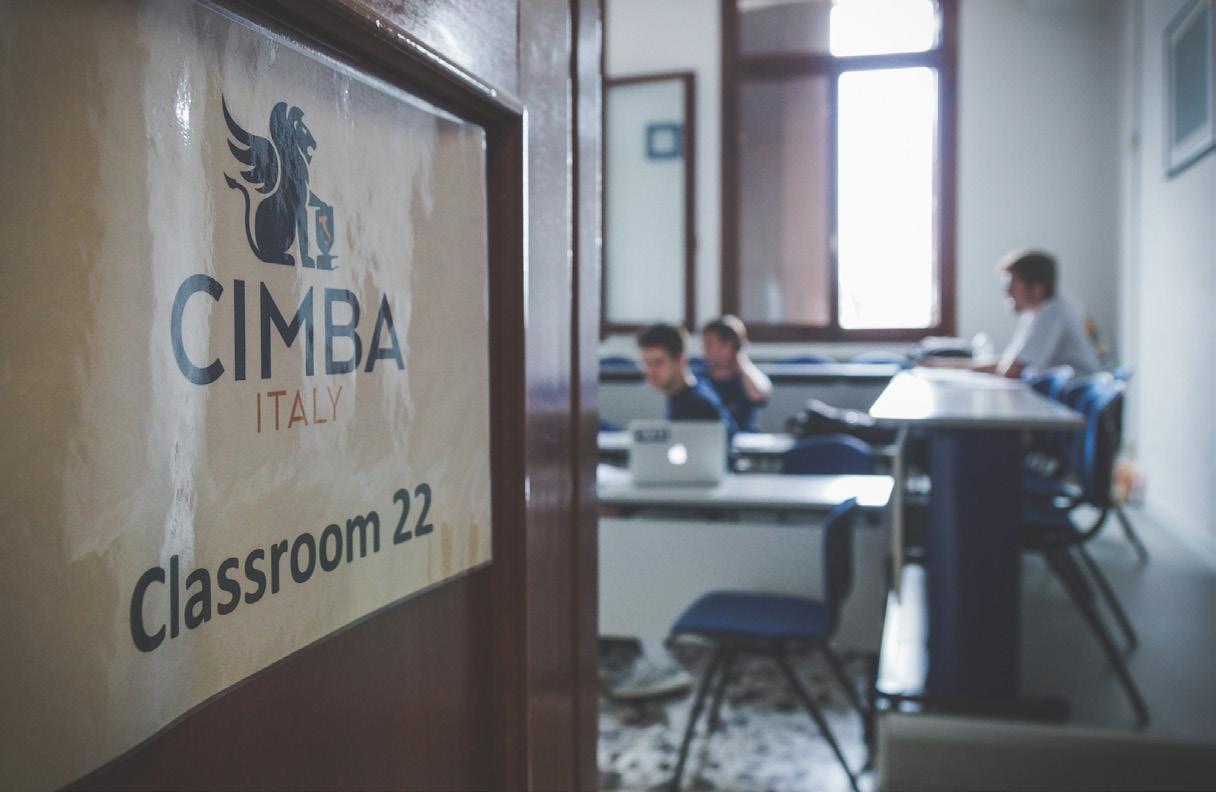
46 Higher Education Digest June 2023
CIMBA is committed to creating inclusive, meaningful international experiences for every student, and embraces diversity in race, sexual orientation, ability, religious beliefs, and socio-economic status



47 Higher Education Digest June 2023 © 2022 Turnitin LLC. All rights reserved. www.turnitin.com Inspire student success. Deliver actionable feedback, faster with Turnitin Feedback Studio. Discover more at www.turnitin.com/products/feedback-studio
MENTOR’S MANTRA
Universities Must Require Climate Literacy For Admissions
Benjamin Freud, Co-Founder, Coconut Thinking
Dr. Benjamin Freud is a learning dialogist, advisor, writer, and podcaster. He is the co-founder of Coconut Thinking, an advisory that supports educators, schools, and learning organizations answer the question: how do we design systems that contribute to the thriving of the bio-collective? Benjamin’s first career was in consulting in Silicon Valley, Europe, and Asia. He then moved into to education and held a variety of leadership roles as Head of School, Director of Learning and Teaching, and Vice Principal Middle & High School. He holds a Ph.D. in History, an MSc in Education, an MBA, and an MA in International Relations.

Education
I’m tired of hearing people ask what is the future of education? It’s not just that over the past few years pundit after pundit has waxed lyrical about trends, visions, and fantasies, all saying the same or completely different things—neither case helps much. It’s not just that these talks often get caught up and tripped up in paradoxes; we need to prepare students for a future that we can’t predict, and we don’t even know the unknowns that will inevitably come into play (this is called objective ignorance by statisticians). It’s not even that there is a certain presumptuousness in assuming that adults are in any position to know how to prepare young learners for what is their future not the adults’.
What I am tired of enduring is the story that “education needs to change because
education in its current state will not provide students with the skills they need for the workplace of tomorrow.” So the solution is “we should make sure that every future employee is adaptable, flexible, a problemsolver, creative, collaborative, able to communicate, innovative,” or some other such list. These are the skills that kids will need in the future apparently. This is why schools should change. This is it, folks, anything less and we lose.
Through all of this, only a few people are asking whether the workplace (figuratively) is what we want, or rather, this workplace, with its current values and drives. Only a few people are wondering whether we could harmonize our work and non-work selves around our purposes and passions. There
49 Higher Education Digest June 2023
Education will play an important role in addressing socio-economic injustice, but only if it does so alongside all the other members of the wider system
are voices coming out of the wilderness that remind us that we face ecological and societal collapse and that it’s not just education we need to transform. There is an entire system, an entire globo-socio-individual consciousness (that consciousness that entangles the world, the social, and the individual into one, rather than separate them or place them along a continuum)
things that accelerate volatility, uncertainty, complexity, and ambiguity (VUCA) because we are all hyperconnected (the H that now appears in VUCAH) to each other and the earth. This is not the same. This is the radical future that we face, and might not like, unless we radically respond to the present, to what has already happened.
Changes in globo-socio-individual consciousness don’t just happen. The break that Thomas Kuhn described might begin as weeds growing in the spaces in between the carefully planted geraniums in the garden of the dominant system; these weeds that are, for the incipient system, beautiful, blossoming dandelions. Dandelions become beautiful when we change our worldview, our consciousness, when we value different things. Values are never static.
So, we take our responsibilities, we look ourselves in the mirror when we respond to climate breakdown, to the Sixth Mass Extinction, to conflict between humans and themselves, between humans and the more-than-human world.
that needs to change for there to be any real change. Education is but one node within the system and, unless there is a new systemic paradigm, we will just get more of the same. Or rather, we will get more of the not same.
We will suffer more extreme weather, more famine, more socio-economic inequality, more disconnection, more conflict, more all of those
Education is part of the bigger system and will not by itself bring on the changes in globo-socioindividual consciousness that will push back Earth Overshoot Day (28 July in 2022!) down the calendar and off it completely. We need to dive into the radicality of the times, not float above it. 28 July 2023 is fast approaching. Education will play an important role in addressing socio-economic injustice, but only if it does so alongside all the other members of the wider system. Education will contribute to making sure future managers make decisions that heal rather than extract from the earth, but only if entire systemic and cultural priorities shift.
And so, we take our responsibilities and plant weeds so that these weeds grow and
50 Higher Education Digest June 2023
It’s encouraging to see colleges take stances and adopt policies that are more sustainable. What would it take for universities to leave an even greater mark, beyond themselves?
become beautiful dandelions as we change our worldview, our values.
Higher education cannot escape its responsibilities.
It’s wonderful that some universities are requiring students to take courses in climate literacy in order to graduate. It’s energizing to see that so many business schools include sustainability in their programs. It’s encouraging to see colleges take stances and adopt policies that are more sustainable. What would it take for universities to leave an even greater mark, beyond themselves?
Changes in education (that respond to climate breakdown) will remain disparate, shallow, and tokenistic unless K-12 schools are required to centralize climate literacy in their curricula, infrastructure, community life, and well-being. This might be mandated by government or accrediting bodies, but recent history with DEI initiatives have not always been encouraging.
No, K-12 schools will only centralize climate literacy if universities have the courage to require that each incoming student have the knowledge, skills, and (some appropriate) experience to respond to climate breakdown. There is fundamentally no difference in requiring an applicant to be proficient in algebra or essay writing and requiring them to be proficient in climate literacy. This is the only way that we will prepare students for the future and for what has already happened. To value climate literacy as essential. To make the statement that we (as individuals, civilizations, and members of the more-than-human world) will not be successful, will not thrive, unless we can respond to what may be the greatest threat to life on earth (even greater than post-Hiroshima) in 65 million years, the time of the Fifth Mass Extinction.
Would this stand really be that courageous? Perhaps, but there is also a pragmatic element at hand. Employers will have to respond (are already responding) to climate breakdown, they will want climate literate staff, they will have to take their own responsibilities. They will want new hires to infuse new energy.
Because employees who are adaptable, flexible, problem-solvers, creative, collaborative, able to communicate, and innovative is not enough. Those who ran the authoritarian machines of the 20th Century were all of those things. What matters behind these skills is intention and purpose. Climate literacy can and should entangle knowledge, skills, and values.
What are the risks in universities requiring applicants to be climate literate? Better question: What are the risks in universities not requiring applicants to be climate literate? (We will figure out what climate literacy might look like when we bring together in dialogue with students, schools, parents, practitioners, experts, government officials—all of the social and ecological stakeholders.)
This is the opportunity for education to play its part in larger systemic change. This change will have to be driven by higher education so long as there continues to exist a linear path from K-12 to university to employment.
The recent move away from standardized testing is a positive step, but it is not enough, nor is having a “holistic” approach that looks beyond grades. This is a matter of responsibility. This is a matter of envisioning the futures. Futures where every young adult is climate literate, valued on the same plane (higher even?) than traditional academic subjects. Universities must require that each applicant be climate literate.
Because these are radical times.
51 Higher Education Digest June 2023
Factors that Influence Students’ Decision to Study Abroad
Introduction
Various factors contribute to students’ decisions to study abroad, including their socioeconomic status, social, cultural, and personal background (Winsome, 2016). The geographical location of international students and government policies addressing student mobility and citizenship can also be influential. Families often play a significant role in the decision-making process, as they have a vested interest in their child’s education. Additionally, current international students and the use of
technology, such as social media, can impact future cohorts of students. Professional sources, like study abroad agents, also play a role in enabling students to study abroad.
Background
The UK’s higher education industry is a significant contributor to both national and global economies, with education being the UK’s second-largest export industry (Tannock, 2013). The UK’s popularity as a destination for international students has led to the development
52 Higher Education Digest June 2023
Geographical and cultural understanding of international students influences decisions to study abroad, with China and India making up 32.4% of all international students in the UK
Iram Lone, International Careers and University Guidance Lead Consultant, Lone Consultancy
INDUSTRY PERSPECTIVE
Iram Lone is a seasoned career and university guidance leader with a wealth of experience in providing high-quality guidance and information to secondary education students. With a focus on inspiring and motivating students, she has successfully coordinated Oxbridge and Ivy League applications in international independent schools and has extensiveexperienceincoordinating international university systems, embedding them into strategies, policies, and curriculums. Iram’s in-depth knowledge of the field has been further enhanced by her Higher Education Studies, MA from UCL.

Education June 2023
of policies that shape international student mobility to UK universities. Geographical and cultural understanding of international students influences decisions to study abroad, with China and India making up 32.4% of all international students in the UK (Universities UK, 2023).
Geographical
Teichler’s (2007) theory distinguishes between horizontal and vertical mobility, which influences the decision of international students to study abroad. Horizontal mobility involves students choosing a system similar in status to their home country, while vertical mobility involves moving to a higher-status system. For example, American students coming to the
UK would be considered horizontal mobility, whereas Chinese students coming to the UK to progress to prestigious institutions would be vertical mobility. Cultural differences also affect the experiences of international students, with American students having more positive experiences due to cultural commonality, while Chinese students face forms of prejudice and discrimination (Tian, 2009). The primary influence for both groups remains the desire for a better education abroad.
Policy
The UK’s policy on international student mobility began in response to public expenditure cuts in 1981, and since then, international student mobility has become a
54 Higher Education Digest June 2023
Cultural differences affect the experiences of international students, with American students having more positive experiences due to cultural commonality, while Chinese students face forms of prejudice and discrimination
crucial alternative source of income (Anderson, 2016). The Prime Minister’s Initiative in 1999-2004 and the rebranded PMI2 in 2006 emphasized the quality of the international student experience and the internationalization of the curriculum (Geddie, 2015). International student mobility is considered a private good available mainly to the elite due to the absence of widening participation access. As a result of the decline in public funding, the UK’s colonial legacy, and global competition, the UK views international students as consumers, and they are valued as a financial income source. The country aims to nearly double the value of education exports to £35 billion and increase the number of international students to 600,000 enrolled in British higher education by 2030 (Department for education, 2019).
Citizenship
Citizenship is a driving factor for some international students, as education abroad can be a first step towards securing citizenship in another country (Ong, 1999). The Chinese government made it easier for citizens to obtain passports and provided funding for students to study abroad. London universities attract a high proportion of international students, but there are concerns about brain drain and the ethics of enrolling students predominantly from countries like China, which are investing heavily in their own higher education system. For example, Tsinghua and Peking University, are two Chinese universities currently ranking in the top twenty by world ranking reputations (Times Higher Education, 2023) However, the movement of internationally educated and skilled workers benefits both sending and hosting countries. Tough
immigration laws may impact international students beyond access to universities.
Family
Chinese citizens born under the one-child policy followed the educational attainment characteristics of developed countries like the UK due to parental investment (Fong, 2011). Limited access to prestigious universities led to studying abroad as an option, which suggests historical underpinnings of countries and cultures have a bearing on citizens seeking international higher education. Higher education abroad continues to be the characteristic of middle-class families who possess cultural capital. Parents who have cultural capital perceive studying abroad to be of great value, and sending a child abroad is one way of stepping up their investment. Cultural capital inherited from parents appears to have a significant influence on decisions regarding higher education abroad.
Future cohorts
Future cohorts of international students are influenced by the experiences of those who came before them, with positive or negative experiences of friends and acquaintances playing a significant role in their decisionmaking (Muttarak, 2014: 73). Social media and technology have made it easier for students to connect across continents and share their experiences studying abroad, though this can sometimes lead to idealized portrayals of the experience. Despite negative experiences reported by Chinese students in the UK, the number of students from China studying in the UK continues to rise. Universities also use social networks to promote their institutions
55 Higher Education Digest June 2023
to potential international students, since the pandemic we have seen a rise in the number of online events from universities.
Agents
International students are often influenced by educational agents who provide guidance and assistance with the university application process, visa requirements, and English
language testing (Collins 2012). However, the quality and fees charged by agents can vary, leading to potential abuse and overcharging of students. Agents are limited in their experience of international higher education and may place students at universities that are not the best fit, but instead offer the agent a commission. Universities use agent-led applications as a main recruitment method. The use of agents has become integral in international student recruitment, but it also comes with ethical concerns. Implementing regulations and providing agent training programs can help address these concerns. The British Council has somewhat addressed this by providing an online agent training program (British Council, 2020).
Conclusion
The UK’s higher education sector is facing challenges in attracting international students due to changes in public funding. Universities’ aggressive marketing tactics may have given a misleading impression of studying in the UK, which could affect both prospective and existing international students. The UK needs to focus on widening participation to truly value international education in the global market. The positive international student mobility policies do not seem to alter the demand from international students, but reviewing immigration policies for them is the right way forward. However, regulation is needed to ensure fair agent involvement in the process of international student mobility. Finally, the UK’s ranking as a top destination for international students may change if countries like China develop prestigious universities that rank highly on league tables.
56 Higher Education Digest June 2023
International students are often influenced by educational agents who provide guidance and assistance with the university application process, visa requirements, and English language testing

Higher Education Digest June 2023 Higher Education Digest October 2021
OHM PROFESSIONAL SCHOOL
Creating Life - Long Learners and Global Professionals
Carrying a rich history of over 1000 years, Nuremberg, the second-largest city of the German state of Bavaria after its capital Munich, is home to some of the most renowned companies in the world. Adidas, AlcatelLucent, Bosch, Datev, Faber-Castell, GfK, MAN, Puma, Semikron, Siemens, Staedtler, Diehl, N-Ergie and Novartis Pharma are a few to name among them. No wonder Nuremberg attracts a large number of international students every year. Hosting international students from over 55 countries, OHM Professional School (OPS) is one of the prominent business schools in Nuremberg. “We were the first to offer the MBA program in Germany- that was in 1998. Consequently,

58 Higher Education Digest June 2023
The OHM Professional School is one of the most experienced business schools in Germany with a wide range of educational programs, providing practical expertise within the framework of professional development

Higher Education Digest June 2023
Building on a broad academic foundation, the OHM Professional School imparts practical expert knowledge. The school emphasizes the integration of methods and trends into applied research as well as a success-oriented approach to studying
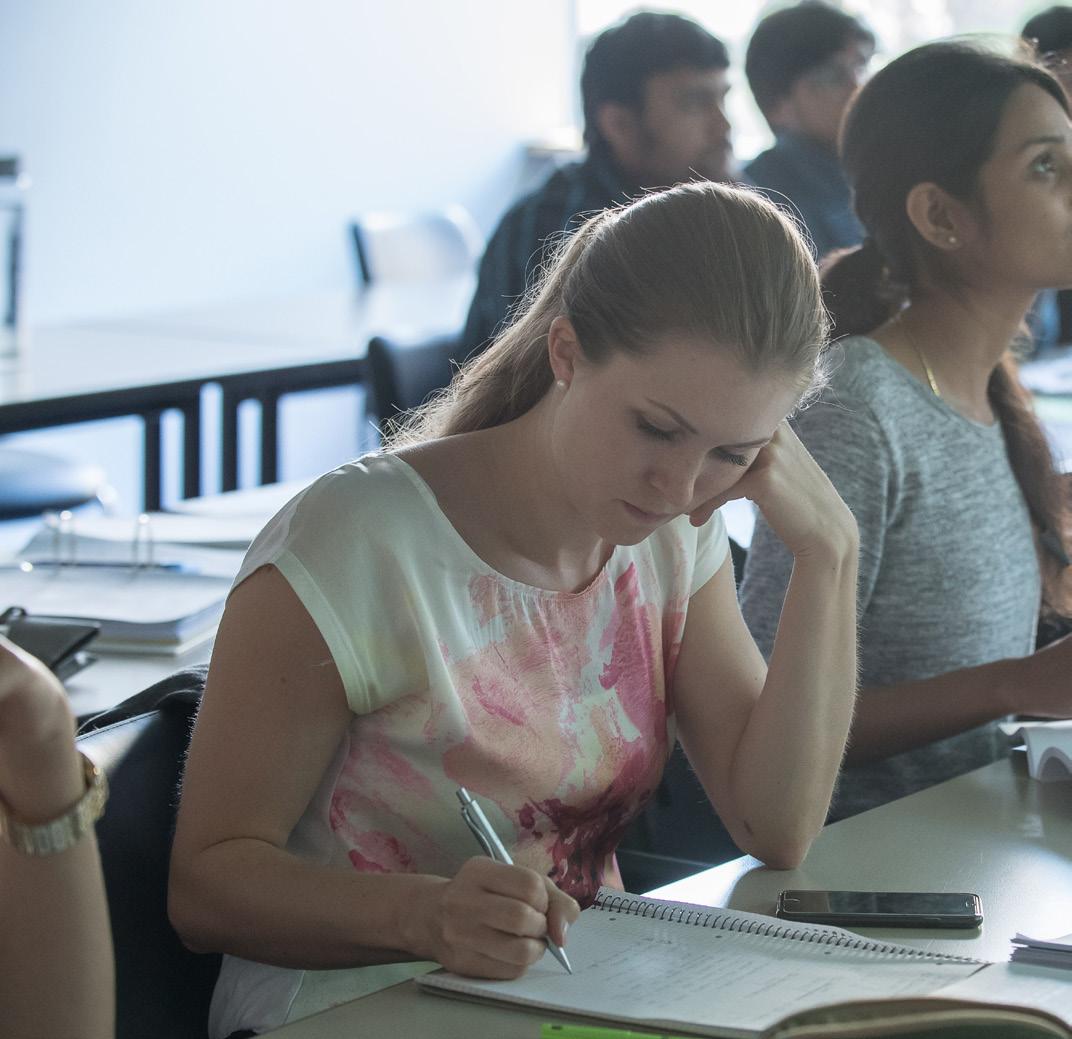
60 Higher Education Digest June 2023
we have a long experience. We take care of every single student individually and consider his special needs. Our students are welcome to join German classes for free at our Language Center. About 80 Percent of our MBA students have an international background,” says Kerstin Lorentz-Sabisch, MBA Program Manager of the OHM Professional School.
Preparing students for their job in the global economy is the top priority
of the OPS, which is dedicated to producing global leaders through its MBA program. “As part of the Technische Hochschule Nürnberg Georg Simon Ohm (Nuremberg Institute of Technology), we see lifelong learning as the key to ongoing professional success. We unite the various continuing education courses offered by Nuremberg Tech under one roof,” shares Ms Lorentz-Sabisch. With its 13,000 students, the Nuremberg Institute of Technology - Nuremberg Tech for short - is one of the largest universities of applied sciences in Germany. As one of the most research-intensive Bavarian universities and one of the most successful in acquiring external research funding, Nuremberg Tech maintains excellent ties with the region’s business sector and is an essential driver of innovation in the Nuremberg Metropolitan Region.
An MBA to Make a Difference
As one of the most experienced business schools in Germany with a wide range of educational programs, the OPS offers its MBA program in two different tracks, economical and non-economical


61 Higher Education Digest June 2023
background. Both are extra-occupational study courses designed for students with a first degree in business administration and/ or economics (MBA Business Background) and students with different degrees (MBA Non-Business Background). The OPS MBA programs are entirely in English and offer an
international environment to build students’ personal business networks. “The community is multinational with around 120 international students. We provide personal coaching for each student at the beginning and end of their studies to enhance their personal development,” states Ms Lorentz-Sabisch.

62 Higher Education Digest June 2023
Kerstin Lorentz-Sabisch MBA Program Manager
The MBA in General Management is designed according to internationally recognized standards and has been accredited by ACQUIN since 2005
At the OPS, students can open the door to the next step of their international career with personal help and advice from its staff. The institute’s goal is to educate its learners in navigating a global business environment and daily management work and make them capable of acting appropriately in any situation. To provide high-quality practical exercises, the OPS has collaborated with companies such as Siemens, Schwan Stabilo, Diehl, Adidas and many more. Ms Lorentz-Sabisch explains, “Some courses include real-life projects with companies like DEHN (the world’s leading specialist in lightning protection and a provider of smart protection solutions) and Siemens. Two elective courses can be chosen by the students. The main courses are fixed. The

63 Higher Education Digest June 2023
students get in touch with the companies and might get a chance for an internship or a job.”
On the flip side, the cost of living in Nuremberg is less compared to other German cities, which is again an attractive proposition for international students. Besides, the German state and sponsors offers scholarships for international students. Ms Lorentz-Sabisch shares, “Exceptionally gifted, high-achieving international students can apply for the ‘Deutschlandstipendium,’ which is awarded once a year. The scholarship holders receive 300 euros per month.”
An Academic Life to Remember
The OPS emphasizes integrating methods and trends into applied research and a successoriented approach to studying. “Courses such
The OHM Professional School (OPS) is located in the heart of Nuremberg, within immediate walking distance from the lively city centre. The campus is next to the Cramer Klett Park, which is a nice spot for studying or spending your breaks outside

64 Higher Education Digest June 2023
as “Innovation Management” teach Design Thinking. The curriculum also includes subjects such as ‘Company Projects.’ In these, students develop business models for renowned companies under the guidance of the professor,” says Ms Lorentz-Sabisch.

At the OPS, selected teams of university professors and top lecturers from the business world guarantee the effective linking of theory and practice. For instance, Prof. Bernd Hümmer, the Academic Director of the MBA, is one of the founders of “Gemeinwohl-Ökonomie”, an innovative, sustainable economic model with the goal of an ethical, economic culture. Furthermore, many OPS lecturers hold top positions in the private sector.
“As part of the Technische Hochschule Nürnberg Georg Simon Ohm (Nuremberg Institute of Technology), our graduates benefit from “OHM Potentiale”, a support program for start-ups. Independently of this, for example, an MBA graduate founded the company “Kletterretter “, which sells hand cream for climbers,” shares Ms LorentzSabisch. Be it on an academic or practical level, the OPS delivers the best for its learners. “Besides exciting and interesting courses, there is also a Christmas party, barbeques and, of course, our unforgettable graduation parties. Trips to Brussels, Strasbourg or Miami are also offered,” concludes Ms Lorentz-Sabisch.
65 Higher Education Digest June 2023
Unlocking Student Achievement: Leadership Best Practices and Strategies
Claudiane Moraes, School Principal, Key Point Christian Academy
Claudiane Moraes has been a school principal for the past 16 years; however, her career started in Brazil,inspiredbyhermother,agreateducatorwithsomuchloveandvocationforherprofession.During her career, Claudiane was fortunate enough to experience a diversity of methodologies, philosophies, and schools, having the opportunity to pursue an A.A. in Elementary Education and a B.S. in Physical Education along with a specialization in school management and ECE. For ten years, Claudiane been the founder principal for Key Point Christian Academy, and she aims to continue working diligently with families and faculty to foster an atmosphere that promotes a learning community characterized by child-centered experiences, trust, respect, and community involvement.
Student achievement is a primary concern for educators, policymakers, and parents alike. In today’s increasingly competitive and globalized world, equipping students with the knowledge and skills they need to succeed is more important than ever. Research has shown that effective leadership plays a critical role in fostering
student achievement (Leithwood et al., 2004). This article explores some of the best practices and strategies educational leaders can employ to unlock student achievement in their schools.
1. Establishing a Clear Vision and Mission
Effective leadership starts with establishing a clear vision and mission for the school (Marzano
66 Higher Education Digest June 2023 ACADEMIC VIEW
By providing a clear direction, leaders can help ensure all stakeholders are aligned and working together to achieve common objectives

67 Higher Education Digest June 2023
et al., 2005). This involves articulating the values, goals, and aspirations that guide the school’s work and drive improvement. By providing a clear direction, leaders can help ensure all stakeholders are aligned and working together to achieve common objectives (Leithwood et al., 2004).
2. Fostering a Positive School Culture
A positive school culture is crucial for supporting student achievement (MacNeil et al., 2009). This involves creating an environment where students feel safe, respected, and valued and where they can develop positive relationships with their peers and teachers. School leaders play a critical role in promoting and maintaining such a culture by setting high expectations for behavior and performance, modeling appropriate conduct, and recognizing and celebrating the achievements of students and staff (Marzano et al., 2005).
3. Emphasizing Collaboration and Shared Decision-Making
Collaboration among staff is a key driver of student achievement (Fullan, 2014). Educational leaders should promote collaborative practices by encouraging staff to work together to solve problems, share resources, and learn from one another. This can be achieved through the establishment of professional learning communities, regular team meetings, and opportunities for peer observation and feedback (DuFour et al., 2006). Additionally, involving staff in decision-making processes can help ensure that decisions are well-informed and that staff feels a sense of ownership and commitment to the school’s goals (Leithwood et al., 2004).
4. Implementing Data-Driven Decision-Making
The use of data to inform decision-making is a powerful tool for driving student achievement (Mandinach &
68 Higher Education Digest June 2023
Educational leaders should work to develop strong partnerships with families and community organizations, providing opportunities for meaningful engagement in the education process
Gummer, 2013). Educational leaders should ensure that relevant data is collected, analyzed, and used to inform instructional practices, resource allocation, and professional development. By making data-driven decisions, leaders can help target interventions and supports for students who need them most while also identifying areas of success and best practices that can be shared across the school (Marsh et al., 2006).
5. Providing Targeted Professional Development
Professional development is essential for enhancing the knowledge and skills of educators and improving student outcomes (Yoon et al., 2007). School leaders should ensure that professional development opportunities are tailored to the specific needs of their staff and aligned with the school’s goals and priorities. This might involve providing training in research-based instructional strategies, assessment practices, or technology integration, among other areas (Desimone, 2009). In addition, effective professional development should be ongoing, job-embedded, and focused on collaboration and reflection to ensure that educators have the support they need to implement new practices and continuously improve their instruction (Gulamhussein, 2013).
6. Engaging Families and the Community
Family and community involvement is a critical component of student achievement (Epstein, 2018). Educational leaders should work to develop strong partnerships with families and community organizations, providing opportunities for meaningful engagement in the education process. This might involve
hosting regular events and meetings, providing resources and information to help families support their children’s learning, and creating avenues for families and community members to participate in decision-making processes (Henderson & Mapp, 2002). By fostering these relationships, leaders can help create a supportive network that promotes student success both inside and outside the classroom.
7. Monitoring Progress and Adjusting Strategies
Effective educational leaders continually monitor progress toward goals, using data and feedback to evaluate the effectiveness of their strategies and make adjustments as needed (Leithwood et al., 2004). This involves setting measurable objectives, regularly reviewing data and progress reports, and engaging in ongoing dialogue with staff, students, and families to identify areas of success and areas in need of improvement. By staying responsive and adaptable, leaders can help ensure that their schools continue to grow and improve over time.
Unlocking student achievement requires effective leadership that emphasizes a clear vision and mission, fosters a positive school culture, promotes collaboration and shared decision-making, implements datadriven decision-making, provides targeted professional development, engages families and the community, and continually monitors progress and adjusts strategies. By adopting these best practices and strategies, educational leaders can create an environment where students are empowered to reach their full potential and succeed in the 21st-century global economy.
69 Higher Education Digest June 2023
PERSPECTIVE
Increasing Access and Affordability Through Education Delivery Optimization
Nick Suwyn, Founder & CEO, Promineo Tech
The rising cost of higher education in the United States, coupled with the rampantly perpetuated myth that college is the only path to success, has led to a world where learning is perceived by many as either too expensive or simply inaccessible. Over the past 20 years, tuition from private and public universities has jumped as much as 175%, and the national student loan debt now totals $1.757 trillion. As a result, many are left with crippling debt, and even more, as much as 48.4% of the adult population, have not completed any postsecondary education. Two critical questions
to be asked include “why is education so expensive?” and “what can we do to make education more affordable and accessible?”.
Much of the expanding cost of higher education comes from common expenses like administrative staff, facility construction, textbooks, and instruction. While other, less recognized drivers, include line-items like marketing and ancillary services such as climbing walls and other college experience frills aimed to make a campus fun. Most of these are necessary expenses, but most can also be optimized and reduced to pass significant savings on to students and increase access to learning.
70 Higher Education Digest June 2023
EDO can be applied to almost any topic, and technology is making it easier every day to introduce cost-saving measures into how we deliver education
INDUSTRY
An educator, engineer, entrepreneur, and community leader, Nick Suwyn started his software development journey at age ten building computer games for neighborhood children. As a child, he developed a love for music and after high school began sharing his passion by teaching after-school music programs at elementary schools around the Phoenix valley. As he was teaching, he attended DeVry University and graduated summa cum laude with a degree in Computer InformationSystems.Hethenworkedas asoftwareengineerfortwoyearsbefore combining his love of technology with his aptitude for teaching and joined a coding bootcamp to lead their academic team. Two years later, Nick founded Promineo Tech with a mission to increase affordability and accessibility of technology education. Today, Promineo Tech is the leading provider of coding bootcamps to community colleges and Nick serves as the CEO, continuing to lead innovation that forwards educational access.

Education June 2023
Education Delivery Optimization (EDO) – the process of introducing operational efficiencies to decrease the cost of learning while maintaining quality – is a straightforward and pragmatic approach we’ve used at Promineo Tech to increase
access to tech education, but it doesn’t have to stop there. EDO can be applied to almost any topic, and technology is making it easier every day to introduce cost-saving measures into how we deliver education.

Education
The process of identifying and prioritizing these expenses is the first step towards creating a more efficient and cost-effective education system. By focusing on the most significant expenses, we can better understand the greatest opportunities to reduce costs while maintaining the quality of education.
At Promineo Tech, we started with the cost of live instruction. Completely replacing live instruction with on-demand content is not an option for most academic programs, so the question became a matter of how to make the most of minimized instructor time. The solution was a flipped classroom. Instead of having an instructor there to introduce topics to students, we developed videos and curriculum for students to familiarize
themselves with at the start of each academic week. In the middle of the week, now armed with a rudimentary understanding of new topics, students meet with an instructor to help solidify what they have already started to learn. Rather than an instructor spend time as a content-delivery mechanism, the instructor’s role is to lead a Socratic seminar to identify gaps in the cohort’s understanding of the weekly learning objectives and then provide personally tailored micro-lectures to fill those gaps. This model enabled us to pass immense cost-savings on to our students, while maintaining a quality learning experience.
Another area where costs can be significantly reduced is administration. With today’s tools and technologies, it is
73 Higher Education Digest June 2023
With proper planning and minimal upfront investment, it is possible to accomplish an incredible amount of work without the need for an entire workforce
fairly inexpensive to automate tasks that traditionally required countless hours of administrative efforts. With proper planning and minimal upfront investment, it is possible to accomplish an incredible amount of work without the need for an entire workforce.

Finding ways to substitute physical requirements for digital is a huge opportunity to decrease tuition. Some examples include moving from an in-person to an online modality, using digital media as opposed to physical textbooks and other resources, or even replacing costly learning objects with AR/VR or holograms. We recently previewed a hologram table that enabled a room full of students to dissect a virtual cadaver, extinguishing the need to purchase new ones each class. With technology like this, the need for expensive machines, supplies, and other resources typically needed in medical or trade education can be reduced to the investment in a single piece of hardware.
This article is in no way meant to be considered a comprehensive outline of how to approach Education Delivery Optimization, and the truth is the process and solutions will be different depending on the institution and the training. However, it’s imperative, given the skyrocketing costs of higher education, that we take a closer look at how we can improve affordability and, in turn, increase access and equity to learning that can improve lives and society. Education can be affordable, but we need more institutions and training providers to adopt modern tools, technologies, and methodologies to make this happen.
Education

Postgraduate Taught Students – The Growing Challenge for Careers Advisors and Employability Services in UK Higher Education
Tom Lowe, Senior Lecturer, University of Portsmouth (UK)
Tom Lowe is a Senior Lecturer in Higher Education at the University of Portsmouth, where his research includes student engagement in the development of education, embedding employability into the curriculum, and supporting student belonging. Tom is also a Senior Fellow of the Higher EducationAcademyandChairoftheRAISENetwork-aninternationalnetworkofover1,000members researching student engagement. Prior to Portsmouth, Tom was the Head of Student Engagement and Employability at the University of Winchester where he led the University’s student development, internationalisation and extra-curricular opportunities, staffing, and strategies relating to fostering student success. Tom has recently published a book titled “Advancing Student Engagement in Higher Education: Reflection, Critique and Challenge” with Routledge Education and has worked as an advisor across more than 30 universities internationally.
UK Higher Education, particularly in England, has seen steady growth in the proportion of 18-year-olds progressing into a university-level study, where in 2019, 50% of 18 year olds in England enrolled, partially meeting Tony Blair’s 1997 aspiration. As the main indicator
of the massification of higher education (being student numbers), the number of young people attending university is tipping into the majority, leading to increasing numbers of degree-level qualified graduates in the job market. This high number of graduates in particular programs such as Psychology, Business Management,
76 Higher Education Digest June 2023 ACADEMIC VIEW
It is unsurprising as with the massification of USA Higher Education in the 1970s-90s, graduates are increasingly turning to postgraduate taught further study (namely Masters Degrees) to achieve this in the UK

77 Higher Education Digest June 2023
and Criminology, has led employers to ask for greater graduate granularity, and graduating students themselves are looking for opportunities to attain experiences and qualifications to ‘stand out amongst the crowd’. It is unsurprising as with the massification of USA Higher Education in the 1970s-90s, graduates are increasingly turning to postgraduate taught further study (namely Masters Degrees) to achieve this in the UK.
Universities too have increasingly encouraged postgraduate study as a means to support graduate employability measures, where postgraduate study in the UK is viewed as a ‘positive’ graduate outcome in both the previous Destination of Leavers of Higher Education Survey and the current Graduate Outcomes Survey. Many universities have supported this further with graduate tuition fee discounts for staying at their undergraduate university of study. During the worst economic time of COVID-19 for job vacancies (summer 2020), students too saw the postgraduate study as a safe option further increasing numbers and a culture of postgraduate study. Masters programs recruit from both current undergraduate student populations from the same university, and, from beyond where students may be returning to their home city (prior to the undergraduate study) and possibly ‘trading up’ to more prestigious or higherranking universities, to further improve their career prospects. These factors discussed above have seen considerable growth in Master’s student numbers, alongside ever-increasing international students at both postgraduate taught and other levels of study.
Considerations for supporting postgraduate taught students for Careers Advisors & Employability Services
78 Higher Education Digest June 2023
So, what should our employability services consider when looking to increase a growing population
It is increasingly important for universities to deliberately support this growing student group to improve student and graduate success
of postgraduate-taught students? Well, similar to undergraduate study in the UK, the societal promise of postgraduate study is to increase graduate prospects, whether the program of study will actually provide it or not. In the UK, postgraduate students are included in the Graduate Outcomes Survey assessment, and in England, the B3 measures of regulation by the Office for Students which assess university ‘success’. Therefore, although initially, prioritising postgraduate study as a means to improve graduate employability metrics for an often-majority student body of undergraduates, this can in fact delay a potentially poor employability metric if the postgraduate study is not meant for careers and employability prospects when a university is a view holistically through schemes such as B3. It is therefore crucial that this expansion does not sit without enhancement. Asking students to take on further student loan debt, which in the UK is in fact a second student loan, on top of the undergraduate loan (that being two post-tax deductions once earning over the threshold) is considerable. Therefore, there is a need for Careers Advisors and Employability Services to enhance graduate support and prospects of postgraduate taught students equally as undergraduate students. Undergraduate students’ and postgraduate students’ journeys differ. It is increasingly important for universities to deliberately support this growing student group to improve student and graduate success.
Considerations for supporting the employability of postgraduate taught students:
Embedding Employability in to the Curriculum
- A recommendation for all provisions to include discussions about career options following study,
authentic experiences with employers, and at least a formative assessment relating to job applications are required across all disciplines. The not to be an understated solution for many of the graduate employability problems faced in UK Higher Education is taking the difficult task of overtly embedding employability activities into taught sessions, mandatory modules, and summative assessments will ensure high student engagement with employability activities. Secondly, engaging in discussions around graduate career paths with alumni panels, what to do with your new skills and experiences from a postgraduate degree, and including employers during class time will also support future thinking and awareness of graduate options.
Discussing Careers from Day 1 - The attraction of postgraduate taught study in the UK is often one-year Masters’s programs (as opposed to often two years internationally). This creates a very short amount of time to engage students with only 12 months of time on campus. Engaging in employability discussions before distraction from assessment and research is critical from the start of these short programs. One-year master’s students will experience a higher level of assessment so building careers as a key course theme, which is spoken about as early as open day and induction, will create the expectation for the remainder of the course and engage students early before taking on such tasks as 15,000-word dissertations.
Orientation with the Careers Advisors & Employability Service - Although many postgraduate students may have been recruited directly from the same institution, many others will be completely new to the institution. The efforts of universities often prioritise undergraduate students (who are often greater in number), yet there is merit to take the same introductory
79 Higher Education Digest June 2023
The efforts of universities often prioritise undergraduate students (who are often greater in number), yet there is merit to take the same introductory practice as with undergraduate students to outline the work of our services is critical to be open to supporting later in the student journey
practice as with undergraduate students to outline the work of our services is critical to be open to supporting later in the student journey.
Focusing on the summer and autumn of the academic year – Many postgraduate taught students will study from mid-September until late September the following year, therefore their job application periods will differ from undergraduate students, where likely application times will start from August (11 months in) and span into the autumn following. Services are often focused on undergraduate students’ induction activities during September (focusing on activities such as
part-time jobs), where in fact, postgraduate-taught students may welcome campaigns and activities prioritised by services earlier in the calendar year.
Engaging students in the development of provision - Taking time to listen to students’ feedback, discuss their motivations for postgraduate study, and understand their career readiness, will enable services can better support and understand students’ needs. This can lead to co-design solutions through working with students as partners and researching the different student demographics and student enrolment services available to inform practice and initiatives.
80 Higher Education Digest June 2023





















































































